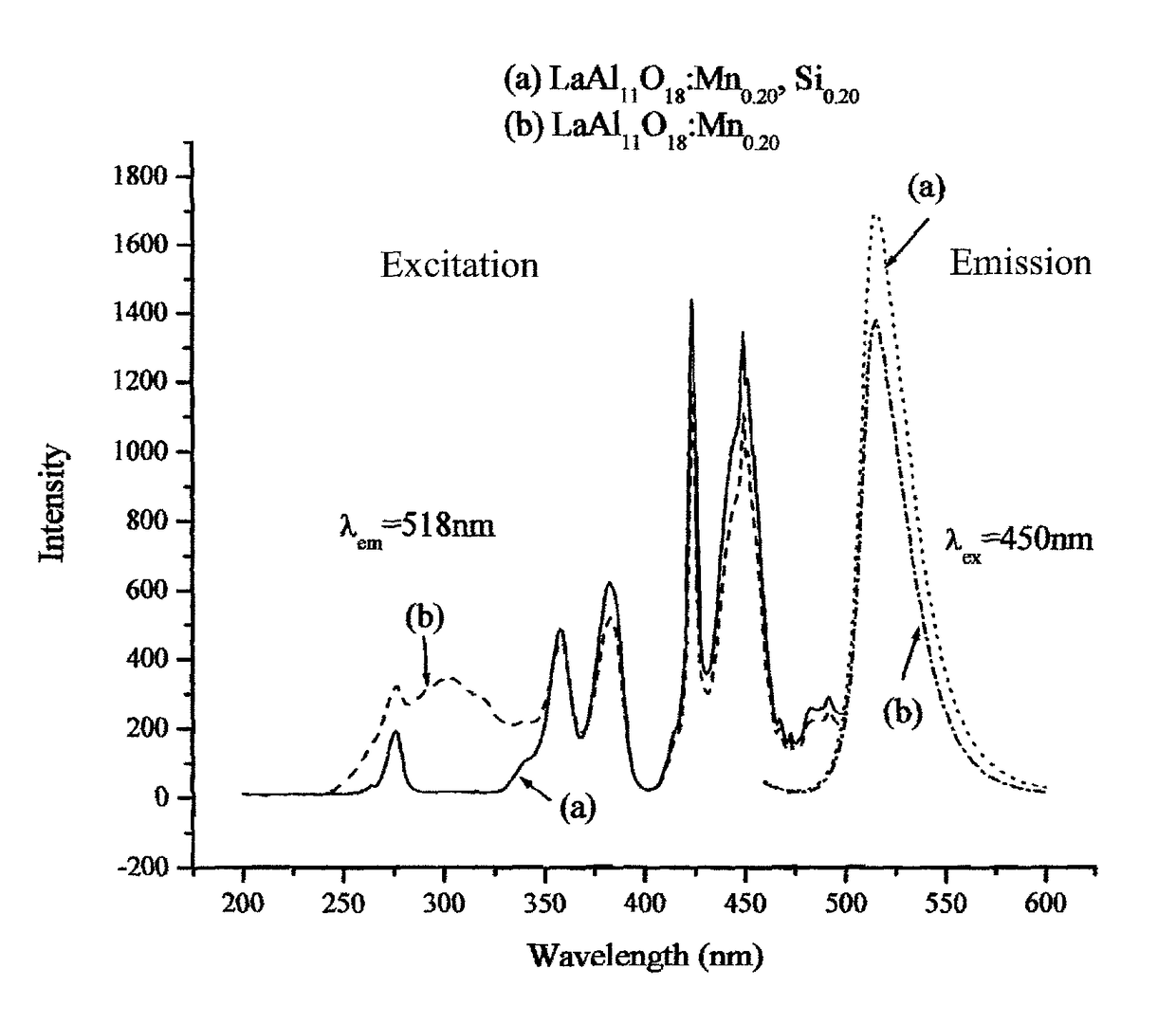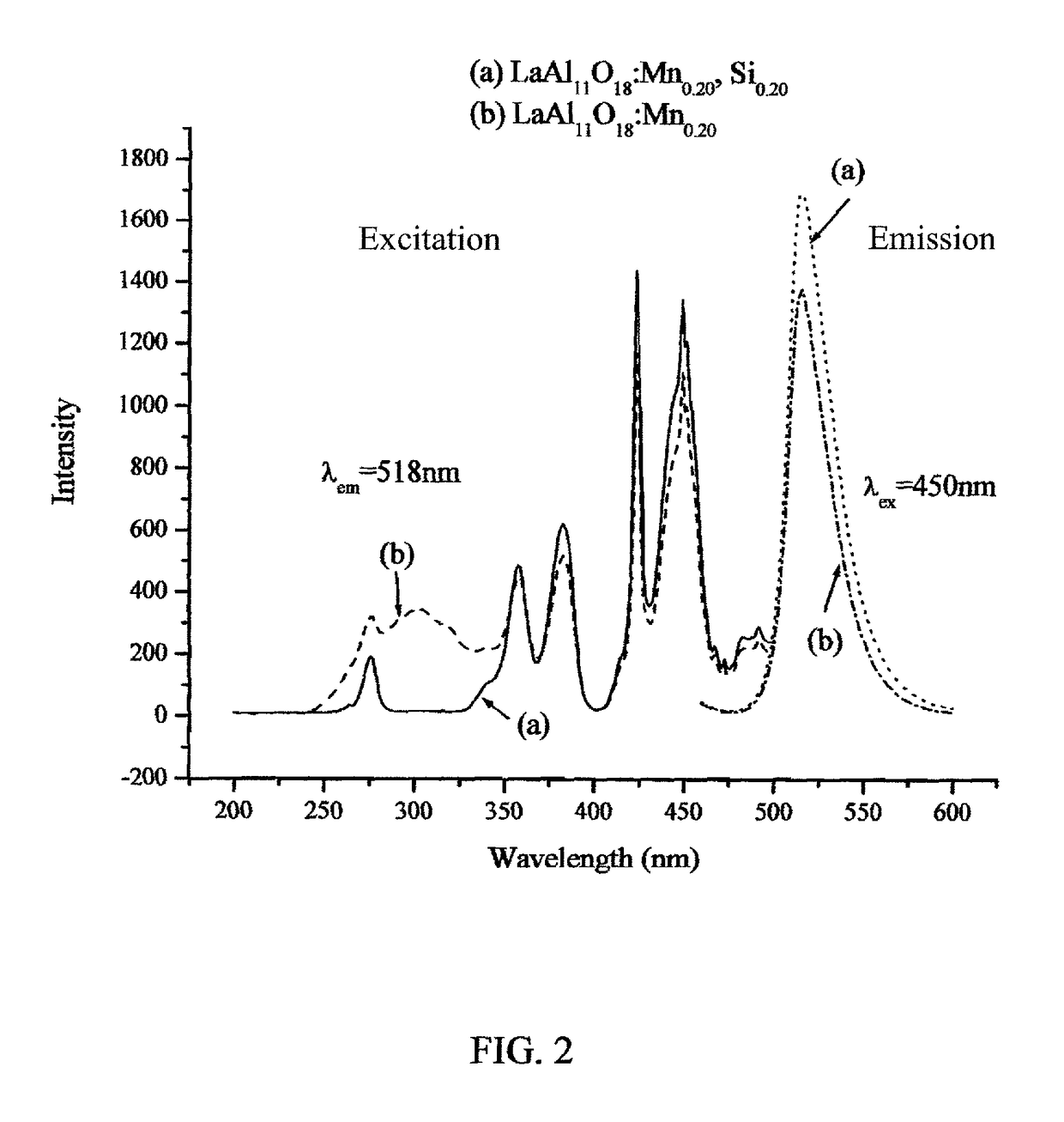Smoothing phosphors for AC LED lighting
a technology of phosphors and phosphors, which is applied in the direction of chemistry apparatus and processes, and in the direction of light-emitting compositions, can solve the problems of unacceptably high flicker of light produced by ac-leds, significant loss of electrical efficiency, and irritating flicker, so as to prolong the light emission time of an ac and reduce flicker.
- Summary
- Abstract
- Description
- Claims
- Application Information
AI Technical Summary
Benefits of technology
Problems solved by technology
Method used
Image
Examples
Embodiment Construction
[0022]The present teachings are directed to the creation of smoothing phosphors for AC LED lighting that are capable of reducing flicker of an AC LED (or array of LEDs). The smoothing phosphor of the present teachings comprises a matrix represented by the general formula: (1−k−r−v)M·(m−p)X·(n−0.5x−0.5)Al2O3:(x+p)MnO, ySiO2, kEu, rR, vLi, wherein M is at least one of La2O3, Ce2O3, Gd2O3, Lu2O3, Ba2OF2, Sr2OF2, Ca2OF2, Ba2OCl2, Sr2OCl2, Ca2OCl2, BaO, SrO, CaO, or ZnO; provided that when M comprises BaO, SrO, CaO, or ZnO, M does not comprise La2O3, Ce2O3, Gd2O3, Lu2O3, Ba2OF2, Sr2OF2, Ca2OF2, Ba2OCl2, Sr2OCl2,or Ca2OCl2; X is at least one of MgO or ZnO; R is at least one of Sm, Pr, Tb, Dy, Er, or Ho; m=0 to 2; n=4 to 11; x=0.005 to 1; y=0.005 to 1; p=0 to 1; k=0 to 0.2; r=0 to 0.2; and v=0 to 0.2.
[0023]When an LED (or array of LEDs) are directly pumped or operated from AC, typically 110V / 60 Hz or 230V / 50 Hz, the instantaneous AC voltage applied has to exceed a minimum threshold value i...
PUM
| Property | Measurement | Unit |
|---|---|---|
| frequency | aaaaa | aaaaa |
| light emission time | aaaaa | aaaaa |
| electrical efficiency | aaaaa | aaaaa |
Abstract
Description
Claims
Application Information
 Login to View More
Login to View More - R&D
- Intellectual Property
- Life Sciences
- Materials
- Tech Scout
- Unparalleled Data Quality
- Higher Quality Content
- 60% Fewer Hallucinations
Browse by: Latest US Patents, China's latest patents, Technical Efficacy Thesaurus, Application Domain, Technology Topic, Popular Technical Reports.
© 2025 PatSnap. All rights reserved.Legal|Privacy policy|Modern Slavery Act Transparency Statement|Sitemap|About US| Contact US: help@patsnap.com



